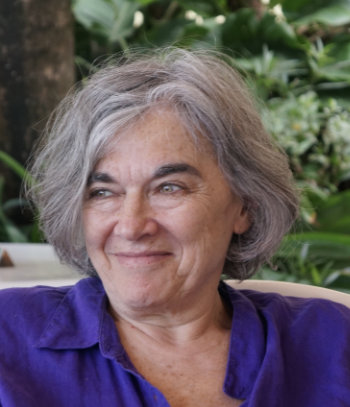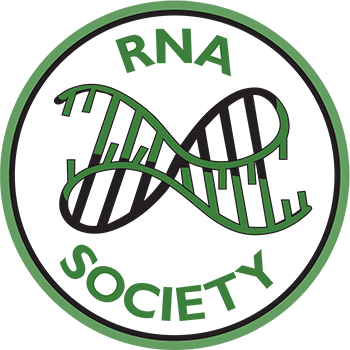Dr. Marlene Belfort, a Distinguished Professor and Senior Advisor at The RNA Institute at SUNY Albany, has long been a trailblazer in molecular biology. For over fifty years her work has stretched across continents and disciplines, making landmark discoveries like self-splicing introns in bacteriophage T4 and conducting pioneering research on inteins. A founding member of the RNA Society and a member of the National Academy of Sciences, Dr. Belfort is also a passionate mentor and advocate for women in science. Her new memoir, “Mommy, Can Boys Also Be Doctors? A Message To Young Scientists And Other Humans” is a candid reflection on her life, both personal and professional. Throughout the book Dr. Belfort relates how her success grew out of the golden rule she set for herself to “do what feels right and good rather than what appears best”. Her inspiring and deeply personal journey traverses the gambit of the human experience, from lows, such as the suicide of her father and her own struggles with depression, to highs, including a decades-long loving marriage, raising three boys and the exhilaration of making major scientific breakthroughs. I recently had the privilege of sitting down with Dr. Belfort to discuss her remarkable story of resilience, curiosity, and purpose.
Your high school in South Africa did not offer much in the way of science education. What drove you to seek extra tutoring to take university entrance exams?
"I had a fascination with nature and evolution from when I was a very young child . . . it was just that basic curiosity about biology and biological phenomena that propelled me. When I think back, I was a little confused about what I should be - it was anything from an artist to maybe doing some secretarial work– but I had a passion for science and a basic curiosity that drove me."
You write candidly about imposter syndrome in the book. How did you learn to manage those feelings?
"I think that Francis Collins [former NIH director] gave me the answer, which is to 'find support'. Find people who understand you - they could be your lab mates, your psychologist, your mother. Francis told me that after he had his PhD and MD degrees and started to do postdoctoral work, he found himself in a lab totally not knowing what he was doing. There was a lousy lab director, and Francis found all sorts of equipment that he had no idea what it was used for, like this scary thing in the hallway that was spewing steam – he did not know what an autoclave was. He would routinely go to the men’s room to cry. He overcame this by befriending a Japanese postdoc who took him under his wing and told him ‘You’re going to be okay. This is what a modern pipette is, and that’s an autoclave.’ Finding support and community is really important in all aspects of our lives.”
You touch on the reality of lab politics. Can you elaborate on what young scientists should be aware of?
"I think that it’s really important for students to consider the atmosphere in a lab. There is little one can do to change the fundamental dynamic in a lab. There are very definite vibes in labs and it’s important for students to look for a good environment that fits with their personality and needs. I’ve been in labs where the atmosphere was toxic, for example, when a woman has domestic responsibilities or becomes pregnant—some PIs are really supportive and some are not - and there isn’t much one can do to escape. So, walking away and finding a new training environment that is supportive is the only solution. That’s hard to do, but sometimes necessary... especially for women."
Mental health is another theme in your memoir. Why was it important for you to write about your struggles with depression?
"Many people ask me why I shared my stories of mental health. There is nothing to hide. If I’m physically ill, I don’t need to hide that - if I’m mentally ill I don’t need to hide that either. The reason is that one can recover with the right treatment and care. So I was hoping that bringing it to the forefront is somewhat inspiring to people who struggle... it exists in every family, and the more we talk about it the easier it is to address."
You spent formative years training in Israel and reflected on both the support and loneliness you experienced. How can we better support international scientists today?
“What is going on today is a different animal from feeling ‘other’, especially with the threats to visas and fear of being unable to continue one’s scientific training. One way to help is to provide support in matters of immigration, and our universities are quickly adapting and doing the best that they can. The current attack on science in the US is heartbreaking at a personal level and catastrophic for our country, and the only thing I can say to overcome this is to continue doing what we’re doing, uncovering the truth, which will stand the test of time, and to work toward a change in administration. I think a quarter of graduate students in the biological sciences in the US are foreign - so it’s a threat to these students and a real threat to the future of science in our country.”
You recall having little guidance on whether to pursue having children or a scientific career. What’s your advice to young researchers today?
“Do it if you feel like doing it. I think the key to doing anything successfully is being passionate about it. One needs to really want to do it on the way in. There is no substitute for hard work, because balancing science and family is essentially doing two full-time jobs.
It’s okay to feel like you’re just muddling through - when it’s like ‘how am I going to handle these kids and their soccer tournament and my conferences and Georges’ [my husband] needs to be out of town?’ Again, one needs to get help and support, from anywhere one can find it - nannies neighbors, family and friends. It’s okay for the feeling of confusion to exist for a while, and eventually one figures it out. It’s true also for scientific problems. We discussed the discovery of that intron and in the beginning of that work we were just muddling through – ‘what are we going to do with this data, it has to be wrong’ . . . persevere and eventually a solution will emerge. That is still true today for all aspects of my life.”
In the book, you assert that no one can 'have it all' at the same time. What did you mean by that?
"There are sacrifices that have to be made. My focus was on the two major activities - running a lab and a family. We would rarely do something that seemed like fun, like go to the movies – because there was always one of us at the lab and other one at a soccer game - we just made our work and our family the top priorities. Then there is one’s unfounded sense of guilt - ‘I’m ignoring these kids, I’m dragging them around the world, they won’t form any roots, and it’ll be a disaster’. But I found that those very activities built in them independence and important bonds with each other. At the same time, I also felt guilty about not spending enough time in the lab or paying attention to the next NIH grant – but that turned out fine too – its’ important to learn ‘good enough’."
You make a strong case that parenting and science complement each other. How so?
“Being a scientist is both very fulfilling and very difficult. Retreating from the very difficult to a family that is needy, that is fun, that is engaging, it provides a relief from the intensity of work. I think that the reciprocal is true as well, I was often asked how do you manage a career with 3 boys, and I said, ‘I go to work’. They would be tearing each other’s hair out and I’d say to my husband ‘I’m sorry I need to leave now’ . . . the two activities provided relief from each other.
I also think that the skills that one builds in one domain transfers to the other. I told the story in my book of an easy-going grad student who was completing her research - when she was about to leave the lab, she became impossible, which mirrored the way my oldest child was before he left for college. Understanding the separation anxiety that underpinned these two very different kinds of situations was very helpful.”
Your early work on bacteriophage T4 led to the discovery of introns in bacteria—an unexpected and groundbreaking finding. Can you walk us through how that unfolded?
“I have to say that it started as being a confusing observation - as discoveries often are. We couldn’t piece the data together - the protein sequence and the DNA sequence weren’t matching. We - this was the work of a group, not just mine, there were protein chemists and geneticists [involved] - went back, re-sequenced and showed genetically and biochemically that there really was an intron. It took time to demonstrate that splicing happened at the RNA level . . . and then that it was self-splicing, and looked just like the Tetrahymena group I intron. That bacteria have introns was an important discovery . . . and the way the introns were so haphazardly distributed in related phages - some have introns and some don’t. The introns looked like they were moving around and showing they were actually mobile at the DNA level and how it happened was also very exciting.”
You recently closed your lab. What prompted the transition?
“It was excruciating to make the decision to close my lab. I had 2 NIH grants - both running for over 30 years – but it came time for competitive renewals, and I felt I needed to develop more computational aspects to the work. I thought, ‘am I ready to do this’? I struggled with it for about a year and then decided that I preferred to do something else. Once the decision was made it was easy, just a lot of work. But I am not retired . . . I am still working and engaged, just no longer running a lab.”
What excites you most about the future of RNA science?
“We need to continue with basic, foundational research. Because without the basic science we would not have made the breakthroughs that we’ve seen in recent years. I think Tom Cech does a beautiful job in his recent book ‘The Catalyst’ outlining all the ways in which basic science has led to recent applications in RNA medicine. I think that we’re at the very beginning of exploring RNA as a medicine - and it’s an extraordinarily exciting time.”
Dr. Marlene Belfort’s memoir is available now. To learn more about her work and life, visit www.marlenebelfort.com or attend the DEI discussion session at RNA 2025 – the annual meeting of the RNA Society – where Dr. Belfort will share her experiences and wisdom as a panel member.

